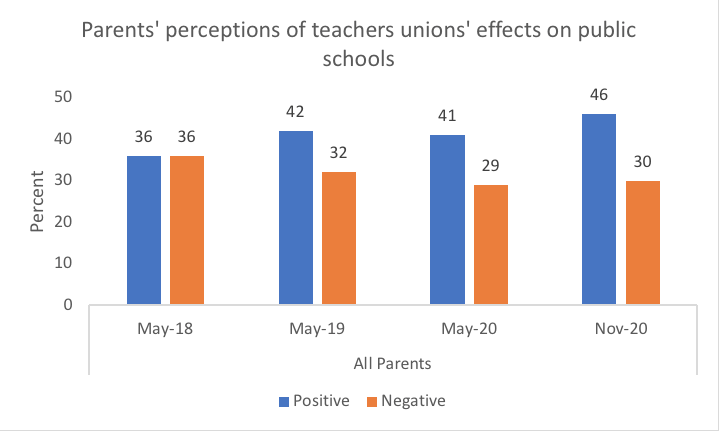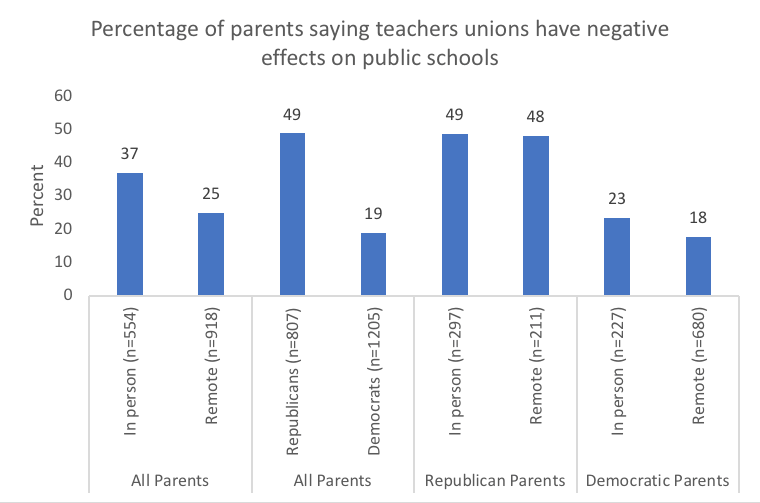
Quick Take
Dubious websites and viral posts falsely claim that the World Health Organization changed COVID-19 testing protocols for political reasons following Joe Biden’s inauguration and admitted that false-positive cases had been inflating the case count. The WHO’s guidance merely reminded labs to follow instructions provided by each test’s manufacturer.
Full Story
A recent memo from the World Health Organization designed for lab professionals became a major focus of misinformation — with unreliable websites and social media users claiming the agency had changed a testing protocol and admitted that COVID-19 cases have been wildly inflated.
But neither of those claims is accurate.
 Instead, the Jan. 20 memo directed labs facilitating polymerase chain reaction, or PCR, tests to carefully follow manufacturer instructions for testing to prevent false positive and negative results.
Instead, the Jan. 20 memo directed labs facilitating polymerase chain reaction, or PCR, tests to carefully follow manufacturer instructions for testing to prevent false positive and negative results.
The distortions online also tied the purported change to U.S. politics.
“An Hour After Joe Biden Is Sworn In, WHO Admits Their Testing Grossly Overstates Individuals Testing Positive for COVID,” read a headline from the Gateway Pundit, a website known for spreading misinformation. The story questioned the motives of public health agencies, asking, “how can these entities ever be trusted again?”
The story was shared more than 8,000 times on Facebook, according to CrowdTangle analytics data.
Another website, Zero Hedge, which also has previously spread falsehoods, similarly told readers: “Right On Cue For Biden, WHO Admits High-Cycle PCR Tests Produce COVID False Positives.” That story was shared on Facebook nearly 7,000 times.

Many posts also cited a viral tweet from David Samadi, a urologist and contributor to the conservative news channel Newsmax, whose work in a New York hospital was the subject of a federal investigation into fraudulent Medicare claims. That hospital reached a $12.3 million settlement in late 2019.
In his tweet, which has since been deleted, Samadi said the guidance instructed labs “to reduce the cycle count in PCR tests to get a more accurate representation of COVID cases,” because “the current cycle was much too high and resulting in any particle being declared a positive case.” One Facebook post sharing Samadi’s tweet claimed that the guidance proved “they’ve been lying to you about case counts and mortality rate THE WHOLE TIME.”
As we said, the WHO guidance implied no such admission. And the memo was an updated version of one issued a month earlier, on Dec. 14, so the idea that it was timed for Biden’s inauguration is wrong.
As we’ve explained before, PCR tests work by scanning the RNA in a sample, such as a nose swab, and searching for the virus RNA. (See our SciCheck article “The Facts on Coronavirus Testing.”)
The PCR test analyzes samples by amplifying a segment of the virus’s genetic material in a series of cycles. A sample with a higher viral load, meaning more virus is present in the sample, will require fewer cycles to detect the novel coronavirus. Lower viral loads will be detected at higher cycles.
There is no universal threshold setting or endpoint — “although 40-45 cycles is often used as the endpoint” of a PCR run — Ian MacKay, a virologist in Australia, told us in an email.
The WHO’s Jan. 20 guidance said it was requesting that those conducting tests be sure to read manufacturer instructions “carefully to determine if manual adjustment of the PCR positivity threshold is recommended.”
In a statement to FactCheck.org, the WHO said it had received 10 reports since early 2020 about some PCR tests providing both false positive and false negative results and that “[a]fter thorough investigation, WHO confirmed that the tests were not always being used appropriately and in accordance with the instructions provided by the manufacturer.”
“In particular, users in laboratories encountered problems with these tests when they did not apply the recommended positivity threshold — this can result in either false negative results (if the threshold applied is lower) or false positives (if threshold is higher),” the WHO said.
MacKay said that problem “is not a test issue; it’s a human training and experience issue.”
“I suspect this is more a problem for certain countries or jurisdictions where rapid roll-out of new testing labs has occurred; labs that are new to public health testing,” MacKay said. “This would typically involve places that have failed to adequately invest in a good public health laboratory network, to begin with. I don’t think anything shows changing threshold values or less experienced laboratories have driven significant inflation of COVID-19 case counts though.”
Kelly Wroblewski, director of infectious diseases at the Association of Public Health Laboratories, said in a phone interview that the WHO guidance was a simple reminder that if lab professionals deviate from the recommended manufacturer thresholds they’re “going to over- or under-call the positives or negatives.” She said the issue was not a significant concern in the U.S.
In a blog post batting down the misconceptions about the WHO’s guidance, MacKay wrote that “this lab-focused advice has been taken by those with malicious intent, or with too little understanding of the topic, and blown it up into something else entirely wrong.”
He further emphasized to us that “PCR results are not a diagnosis by themselves” — they’re part of the COVID-19 diagnosis. WHO advises they be considered in context of other factors, including symptoms and potential exposure to COVID-19.
Understanding Cycle Threshold Values
PCR tests are considered a gold standard for diagnostics among scientists, and while false negative and positive results are possible with any test, false positives from PCR tests are not thought to be a major or systemic issue — even positive results at high-cycle threshold values — experts say.
For example, MacKay has observed that, looking at COVID-19 data on tests in the United Kingdom, even reducing the “cycle number by 10 (from, for example, 45 to 35), for the sake of appeasement, the majority of positives would still be uncontroversially positive.”
Matthew Binnicker, a professor of laboratory medicine and pathology at the Mayo Clinic, said the true debate over results at high-cycle threshold values isn’t whether they are “false positives.”
“PCR tests are very specific, and these are not false-positives,” he told us in an email. “The test is doing what it was designed to do — detect the viral RNA in samples.”
Instead, he said, the tension among scientists concerns whether the values can be used “to determine whether someone is, or is not, ‘infectious’” to others. In other words, the question isn’t whether someone contracted the coronavirus, but rather, whether that person is likely to still be contagious and should be told to isolate and have their contacts traced.
“Some would argue that we should be ignoring low-positive PCR results (i.e., those with a high PCR cycle threshold value), as these results may mean that someone is no longer infectious,” Binnicker said.
But, he said, such a result could also mean that a person only very recently became infected and has yet to hit peak infectiousness.
And, he cautioned, the quality and type of sample can also affect how many cycles are needed to detect the virus, so it’s not always the case that a high-cycle result means a person is harboring remnants or only small amounts of the virus.
Michael Mina, an assistant professor of epidemiology at Harvard University, likewise said getting positive test results at high-cycle threshold values “doesn’t mean they’re false positive, they’re still actually detecting the SARS-CoV-2 RNA.”
Mina said during a call with reporters that the WHO’s memo served as a reminder that “you have to be discerning about how to evaluate” cycle threshold values. “And if you’re going to start using the actual values from the PCR as part of your decision-making, [it’s important] to really know what it is you’re doing.”
For example, if someone is asymptomatic and happened to get a PCR test through testing as part of surveillance in a community, it may be a low viral load detected at a high-cycle threshold value — which could mean “you already were infectious and you maybe don’t need to be isolated,” he said.
“But it’s very hard to know that. You need to do repeated testing, you need to take that person and test them again,” he added. “Or, test them with an antigen test. That would be the other way to approach it.” (Antigen tests are a different type of test that can be used to quickly identify an active coronavirus infection.)
Binnicker also noted that, since patients who test positive for COVID-19 can sometimes continue to test positive long after recovering, the Centers for Disease Control and Prevention doesn’t recommend PCR tests be used to determine when someone is no longer infectious. Instead, the agency advises relying on time and symptoms to break from quarantine or isolation.
Jessica McDonald contributed to this article.
Editor’s note: FactCheck.org does not accept advertising. We rely on grants and individual donations from people like you. Please consider a donation. Credit card donations may be made through our “Donate” page. If you prefer to give by check, send to: FactCheck.org, Annenberg Public Policy Center, 202 S. 36th St., Philadelphia, PA 19104.
Sources
Binnicker, Matthew. Professor of laboratory medicine and pathology, Mayo Clinic. Email to FactCheck.org. 22 Jan 2021.
“Coronavirus Disease 2019 Testing Basics.” U.S. Food and Drug Administration. Accessed 29 Jan 2021.
“Duration of Isolation and Precautions for Adults with COVID-19.” Centers for Disease Control and Prevention. Updated 19 Oct 2020.
“Manhattan U.S. Attorney Announces $12.3 Million Settlement With Lenox Hill Hospital For Submitting Fraudulent Medicare Claims For Urology Procedures And Hospital Services.” Press release, U.S. Attorney’s Office for the Southern District of New York. 8 Nov 2019.
McDonald, Jessica. “The Facts on Coronavirus Testing.” FactCheck.org. 10 Mar 2020.
MacKay, Ian. Adjunct associate professor, University of Queensland. Email to FactCheck.org. 25 Jan 2021.
MacKay, Ian. “The ‘false-positive PCR’ problem is not a problem.” Virology Down Under. 22 Nov 2020.
MacKay, Ian. “WHO to new PCR users: read the damned manual!” Virology Down Under. 23 Jan 2021.
Mina, Michael. Assistant professor of epidemiology, Harvard University. Phone conference. 22 Jan 2021.
“Using Reverse Transcription Polymerase Chain Reaction (RT-PCR) in COVID-19 Testing.” DNA Learning Center, Cold Spring Harbor Laboratory. Accessed 28 Jan 2021.
“WHO Information Notice for IVD Users 2020/05.” World Health Organization. 20 Jan 2021.
“WHO Information Notice for IVD Users.” World Health Organization. Archived 14 Dec 2020.
Wroblewski, Kelly. Director of infectious diseases, Association of Public Health Laboratories. Phone interview with FactCheck.org. 28 Jan 2021.
The post Viral Posts Distort WHO Guidance on COVID-19 Tests appeared first on FactCheck.org.
Get more news: https://www.northdenvernews.com

News…. browse around here
- 3D Comfort mask design
- Convenient earloop design
- Comfortable stretch fabric for tight fit
- Easy to put on & remove
- Color: white
- Materials: 3-layer melt-blown non-woven PPE
- Product dimensions: 1"H x 8"L x 5"W
- 3D Comfort design
- KN95 PRC Standard (Similar to NIOSH N95)
- CE 0194
- FFP2 - EN149 Filtration Level
News.... browse around here


 (@yashar)
(@yashar) 











